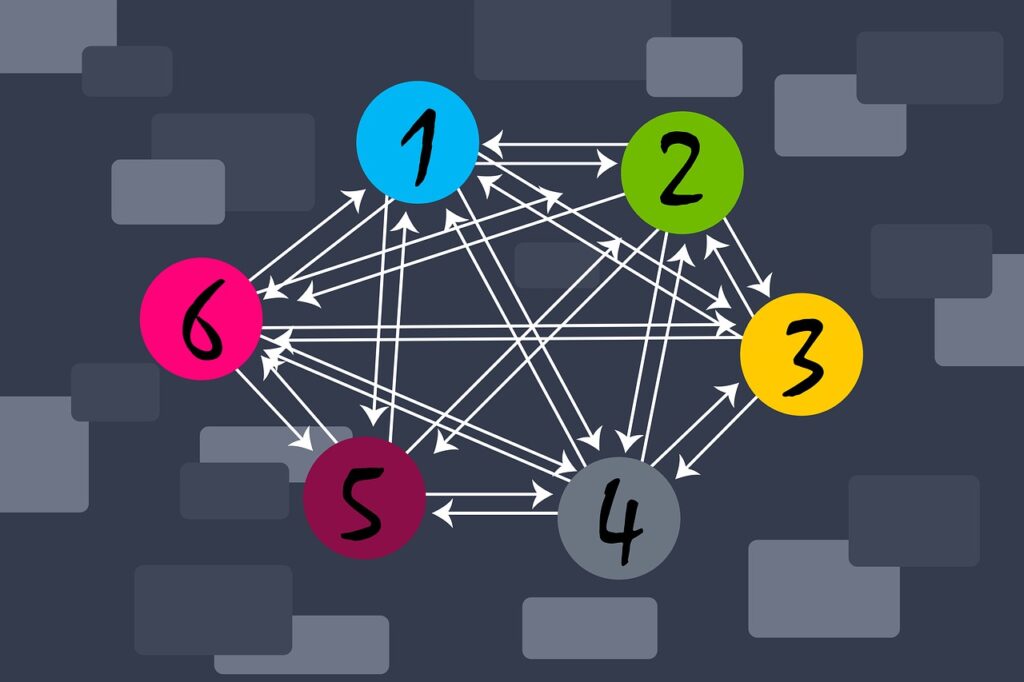Internal linking is an essential aspect of search engine optimization (SEO) that can significantly impact your website’s ranking and user experience. By establishing a well-structured internal linking strategy, you can guide search engines and users to valuable content, improve keyword rankings, and enhance the overall browsing experience.
In this section, we will delve into the best practices for internal linking in SEO, including how to use internal links for SEO success, the importance of internal links, and the benefits of internal linking for SEO. We will also explore effective techniques for internal linking, optimizing internal links for SEO success, and incorporating internal links into your website’s structure.
Key Takeaways:
- Internal linking is crucial for SEO success.
- Effective internal linking can boost ranking potential and enhance user experience.
- Strategic internal linking involves optimizing anchor text and creating a well-structured website hierarchy.
- Regularly audit and refine your internal linking strategy for long-term SEO success.
Understanding the Importance of Internal Links in SEO
Internal links are a type of hyperlink that connect one page of your website to another page on the same domain. They serve as a crucial component of search engine optimization and website organization.
From an SEO perspective, internal links help search engines crawl and index your web pages effectively. They also provide valuable information about the relationships between different pages and the overall hierarchy of your website. By linking to other pages within your website, search engines can understand the context and relevance of your content, which can positively impact your website’s visibility in search engine results pages (SERPs).
From a user perspective, internal links provide a seamless browsing experience that helps visitors navigate through your website easily. They allow users to locate relevant content quickly and efficiently, enhancing the overall user experience.
Internal links can be created in various formats such as text, images, or buttons, and they can be used to connect related content, highlight important pages, and direct traffic to new or updated content.
Overall, internal links play a vital role in establishing the structure of your website, improving user experience, and positively impacting your website’s SEO performance. In the next section, we will discuss how to use internal links for SEO success.
How to Use Internal Links for SEO Success
Internal links are a powerful tool for optimizing your website’s SEO and improving user experience. By incorporating internal links strategically, you can distribute authority and guide search engines to valuable content.
Anchor Text Optimization
Anchor text is the clickable text that appears in a hyperlink. When creating internal links, use descriptive and relevant anchor text to provide context for search engines and users. This not only helps establish the importance of the linked page but also improves the click-through rate (CTR) by providing users with a clear understanding of what they will find on the linked page.
Relevant Linking
When linking internally, focus on relevant linking. Link to pages that add value and complement the content on the current page. This can be achieved by conducting keyword research and identifying related pages on your website that are relevant to the current topic.
Deep Linking
Deep linking refers to linking to pages other than your homepage. By linking to deeper pages on your website, you can distribute link equity to important pages, improving their ranking potential. This also provides users with direct access to specific content, improving their experience and reducing bounce rates.
Consistent Site Structure
Consistency is key when it comes to site structure and internal linking. Ensure that every page on your website is linked to from another page, creating a well-structured hierarchy that is easy to navigate for both users and search engines. Maintain a balanced link distribution, avoiding excessive linking or linking to irrelevant pages.
By incorporating these key aspects into your internal linking strategy, you can effectively optimize your website’s SEO and improve user experience. By guiding users to valuable content and improving the visibility of important pages, you can achieve long-term SEO success.
Understanding Absolute Internal Linking in SEO
Absolute internal linking is a crucial aspect of effective SEO. It refers to the practice of linking to internal pages on your website using absolute URLs that include the full domain name and protocol, such as “https://www.example.com/page”. This approach provides a clear path for search engine crawlers, ensuring proper indexing of your web pages and preventing any duplicate content issues.
By using absolute internal linking, you can help search engines understand the hierarchy and relationships between pages on your website, improving overall crawlability and increasing the visibility of your web pages in search results. This technique is particularly useful for websites with complex structures or multiple subdomains.
The Benefits of Internal Linking for SEO
Internal linking is an essential aspect of effective SEO strategy. By incorporating internal links throughout your website, you can enhance the user experience, improve crawlability, and maximize the visibility of your content in search results.
Improved Navigation and User Experience
Internal links facilitate navigation between different pages of your site, allowing visitors to find relevant content more easily. By guiding users to related pages and providing them with additional context, you can create a seamless browsing experience that increases engagement and reduces bounce rates.
Boosted Authority and PageRank
Internal links distribute authority and PageRank throughout your website. By linking to important pages, you can increase their ranking potential and highlight their relevance to search engines. This helps improve the overall authority of your website and promotes better rankings for specific keywords.
Discovery and Indexation of New Pages
Internal links help search engines discover new pages on your website and understand the relationships between different pages. By incorporating links to new pages, you can ensure that they are crawled and indexed more quickly, improving their visibility in search results.
Internal linking is a critical component of SEO that can significantly impact your website’s ranking and user experience. By optimizing your internal linking strategy, you can enhance your website’s authority and visibility, drive targeted traffic to your site, and achieve long-term SEO success.
Understanding Internal Links in SEO
Internal links are hyperlinks that connect one page of your website to another page within the same domain. These links play a vital role in establishing relationships between different pages and indicating the importance of specific content. Internal links can be created through text, images, or buttons, providing a seamless browsing experience for users and facilitating better crawlability for search engines.
When creating internal links, it is essential to use descriptive anchor text that accurately describes the content on the linked page. This helps search engines understand the relevance of your content and improves the user’s experience by providing a clear indication of the page’s content.
Furthermore, internal links help distribute authority and PageRank throughout your website, thereby increasing the ranking potential of your important pages. By establishing a well-structured website hierarchy and linking to related content, you can guide users and search engines to valuable information and improve the overall user experience.
Optimizing Internal Links for SEO Success
Optimizing your internal links is crucial for improving your website’s SEO performance. Below are some techniques you can employ to ensure your internal linking strategy is effective:
1. Use Descriptive Anchor Text
Anchor text should be descriptive and relevant to the content it links to. Avoid using generic phrases such as “click here” or “read more” and instead use specific keywords that accurately describe the content.
2. Incorporate Relevant Keywords
Include relevant keywords in your anchor text to signal search engines about the topic and relevance of your content. However, avoid overusing keywords as it may appear spammy and negatively impact your SEO.
3. Maintain Balanced Link Distribution
Ensure that your internal links are evenly distributed throughout your website. This helps distribute authority and PageRank and prevents any specific page from becoming too dominant.
4. Regularly Audit and Update Internal Links
Periodically review your internal linking structure to ensure it remains effective and relevant. Remove any broken or outdated links and replace them with new ones that point to high-quality, relevant content.
By following these optimization techniques, you can enhance the visibility of your web pages, improve organic search rankings, and drive targeted traffic to your website.
Incorporating Internal Links in Your Website’s Structure
Strategically incorporating internal links in your website’s structure can significantly impact its user experience and SEO performance. Here are a few tips to consider when designing your website’s internal linking structure:
Create a Hierarchical Structure
Create a clear and logical hierarchy of pages and categories that allows users and search engines to navigate effortlessly through your site’s content. Place the most important pages at the top of the hierarchy and divide content into categories and subcategories.
Ensure Every Page is Linked to
Include links to every page on your website from another page. This will ensure that every page has the opportunity to receive traffic, and it will also make it easier for users and search engines to discover and navigate your content.
Use Descriptive Anchor Text
Use descriptive, relevant, and informative anchor text for your internal links. This helps guide users and search engines to valuable content, while also signaling the topic and relevance of the linked page.
Maintain a Balanced Link Distribution
Avoid excessive internal linking, as it can dilute the value of your links and make your content appear spammy. Instead, aim for a balanced distribution of internal links that reflects the importance and relevance of the content.
By following these principles, you can create a well-structured and effective internal linking system that enhances your website’s authority and visibility in search engine results pages.
Effective Techniques for Internal Linking
By incorporating various techniques for internal linking, you can significantly boost your website’s SEO. Here are some effective techniques:
Breadcrumb Navigation
Breadcrumb navigation provides users with a trail of links that show their current location within your website’s hierarchy. This technique improves website navigation, enhances user experience, and helps search engines understand the structure of your site.
Contextual Linking
Contextual linking involves linking to relevant content within the body of your website’s content. This technique guides users to related content and enhances their browsing experience. Additionally, contextual linking helps search engines understand the relevance of different pages and topics.
Related Post Sections
Related post sections suggest additional content to users based on the page they are currently on. This technique encourages users to explore more content on your site and improves the overall user experience.
Sitemap Optimization
A sitemap provides a comprehensive overview of the pages and content on your website. Optimizing your sitemap and ensuring all pages are included can assist search engines in crawling and indexing your site effectively.
By employing these techniques, you can enhance the value of your internal links, guide users to valuable content, and improve your website’s overall SEO performance.
Best Practices for Internal Linking in SEO
Internal linking is an essential component of SEO that can significantly impact your website’s ranking and user experience. To ensure that your website’s internal linking structure is optimized for SEO, consider following these best practices:
Prioritize Relevant and Informative Anchor Text
When creating internal links, use anchor text that is relevant to the linked page and informative for the user. Avoid using generic or vague anchor text, as this can negatively impact both the user experience and search engine crawlability. Ideally, your anchor text should clearly describe the linked page’s content and provide value to the user.
Avoid Excessive Internal Linking
While internal linking is essential for SEO, excessive linking can be detrimental. Avoid overusing internal links, as this can dilute the value of individual links and distract users from the main content. As a general rule, limit internal links to one or two per page, and ensure that the linked pages are relevant and valuable to the user.
Use Proper Link Placement
The placement of internal links can impact their effectiveness for both users and search engines. Place internal links within the main content area of a page, and avoid placing them in the footer or sidebar. Additionally, ensure that your links are placed within context, as this can enhance their relevance and value for the user.
Regularly Audit and Update Internal Links
Regularly auditing and updating your internal linking structure can ensure that your website’s internal links remain relevant and effective for SEO. Use tools such as Google Search Console to identify broken links, and update outdated links to ensure that they remain relevant and valuable to the user.
Utilize Tools for Analyzing Internal Link Structure
There are several tools available that can help you analyze and optimize your website’s internal linking structure. Consider using tools such as Ahrefs or Moz to identify link opportunities and ensure that your internal linking strategy is optimized for SEO.
By following these best practices, you can effectively optimize your website’s internal linking structure for SEO, enhance the user experience, and boost your website’s visibility in search engine results pages.
Conclusion
Internal linking is a crucial component of successful SEO. By strategically incorporating internal links throughout your website, you can enhance the visibility and authority of your web pages. Remember to optimize anchor text, utilize breadcrumb navigation, contextual linking, and related post sections, while maintaining a well-structured website hierarchy.
Following best practices such as avoiding excessive internal linking, utilizing proper link placement, and regularly auditing and updating your internal links can also maximize the SEO benefits of internal linking. By adhering to these strategies and techniques, you can achieve long-term SEO success and improve your website’s ranking and user experience.
FAQ
Q: What are the best practices for internal linking in SEO?
A: Internal linking plays a crucial role in improving your website’s ranking game and enhancing the overall user experience. By establishing a well-structured internal linking strategy, you can effectively optimize your website and boost its visibility in search engine results pages (SERPs).
Q: Why are internal links important in SEO?
A: Internal links are essential for search engines to crawl and index your web pages effectively. They help users navigate through your site and assist search engines in understanding the relationships between different pages and the overall hierarchy of your website.
Q: How can I use internal links for SEO success?
A: To optimize your website’s SEO using internal links, you need to focus on anchor text optimization, relevant linking, deep linking, and consistent site structure. By strategically incorporating internal links, you can guide search engines and users to valuable content, improve keyword rankings, and enhance the user experience.
Q: What is absolute internal linking in SEO?
A: Absolute internal linking refers to using absolute URLs when creating internal links. This helps search engines follow a clear and unambiguous path for proper indexing of your web pages. It also prevents duplicate content issues and enhances the overall SEO performance of your website.
Q: What are the benefits of internal linking for SEO?
A: Internal linking improves website navigation and user experience, distributes authority and PageRank, helps search engines discover new pages, understand website architecture, and establish topical relevance.
Q: What are internal links in SEO?
A: Internal links are hyperlinks that connect one page of your website to another page on the same domain. They establish relationships between different pages and indicate the importance of specific content, facilitating better crawlability for search engines and a seamless browsing experience for users.
Q: How can I optimize internal links for SEO success?
A: Optimizing internal links involves using descriptive anchor text, incorporating relevant keywords, maintaining a balanced link distribution, and regularly auditing and updating your internal linking structure. By following these strategies, you can improve visibility, organic search rankings, and targeted traffic.
Q: How should I incorporate internal links in my website’s structure?
A: When planning your website’s structure, create a hierarchical system that allows easy navigation for users and search engines. Ensure every page is linked to another page to maximize crawlability and exposure. A well-structured internal linking system improves visibility and authority of your web pages.
Q: What are effective techniques for internal linking?
A: Effective techniques include breadcrumb navigation, contextual linking, related post sections, and sitemap optimization. These techniques create a seamless user experience, improve site architecture, and guide search engines to relevant content, enhancing overall SEO performance.
Q: What are the best practices for internal linking in SEO?
A: To ensure an effective internal linking strategy, prioritize relevant and informative anchor text, avoid excessive internal linking, use proper link placement, regularly audit and update internal links, and utilize tools for analyzing internal link structure. Adhering to these practices maximizes SEO benefits and improves website visibility and authority.
Q: What is the importance of internal linking in SEO?
A: Internal linking is a vital component of SEO that significantly impacts website ranking and user experience. By implementing effective strategies, optimizing anchor text, and creating a well-structured website hierarchy, you can improve visibility in search engine results and provide seamless navigation for users.



